Koko’s story
Koko’s keepers knew that she loved babies. So, because Koko didn’t have any of her own, her trainer decided to celebrate her birthday by preparing a very special treat.
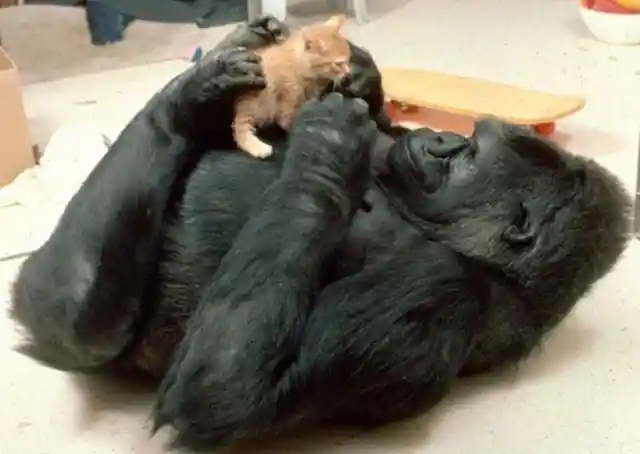
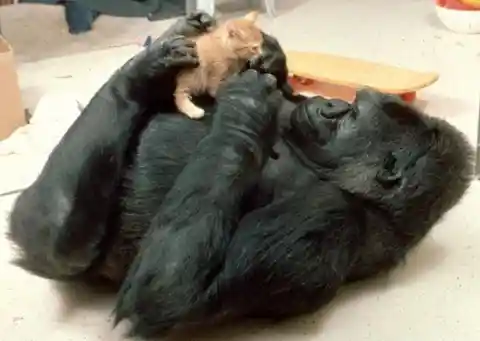
Indeed, Koko’s keepers couldn’t wait to see her face when she looked into the box they’d prepared. After all, this was pretty much her dream gift.
Koko’s story, though, began on July 4, 1971. This was when San Francisco Zoo saw the birth of a western lowland gorilla called Hanabiko, a name meaning “fireworks child.” The gorilla was nicknamed Koko, and when she was just half a year old she contracted a life-threatening disease.
Work with the baby gorilla
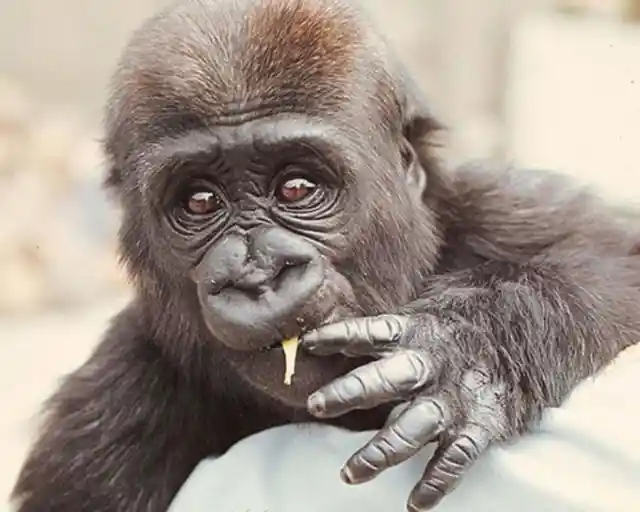
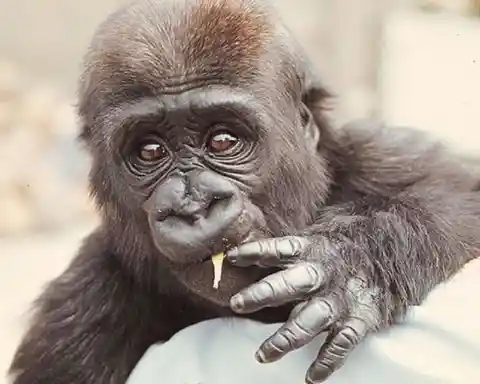
To be treated, then, she had to be removed from her mom.
After Koko recovered, she caught the attention of Stanford University’s Francine “Penny” Patterson. Indeed, the psychology Ph.D.
Project Koko
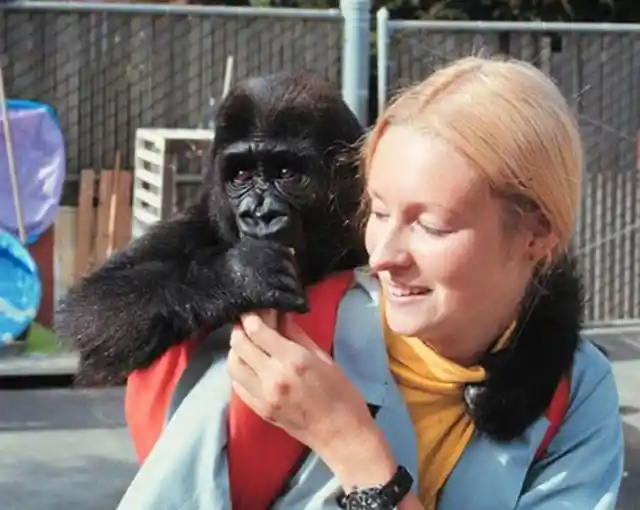
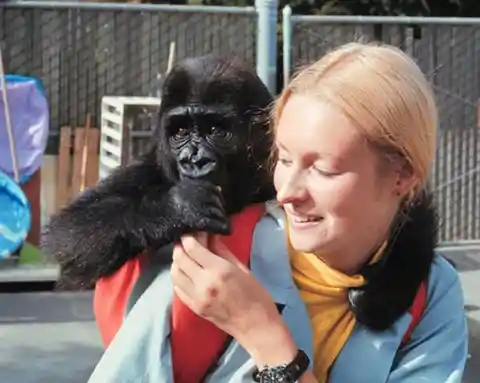
student asked the zoo if she could work with the baby gorilla as part of a project. Fortunately, the zoo agreed – on the condition that she’d promise to spend four years in the ape’s company.
So Koko relocated to Stanford University with Patterson in 1974, and together with zoologist Dr. Ronald Cohn, Patterson worked with the gorilla daily.
Unbreakable bond
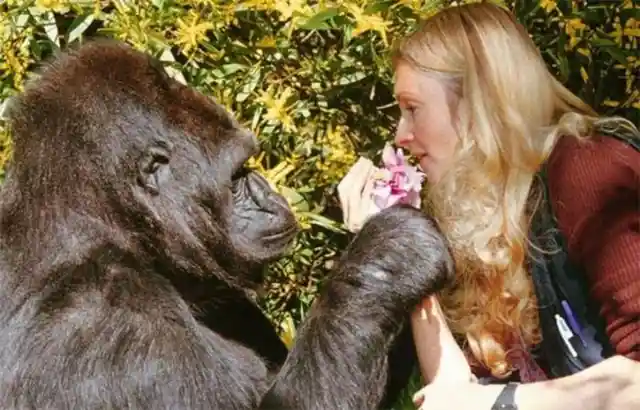
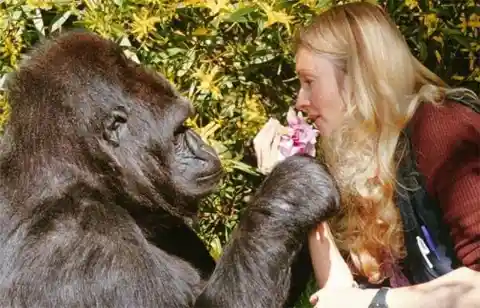
Their goal for “Project Koko” was, moreover, to see if apes could learn sign language.
During the project, Patterson formed an unbreakable bond with Koko and became like a mother to her. The connection was also shared by Ndume and the late Michael, two other gorillas who joined the project.
Koko knows more than 1,000 signs
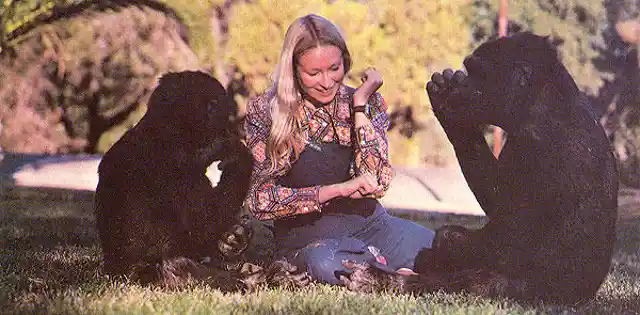
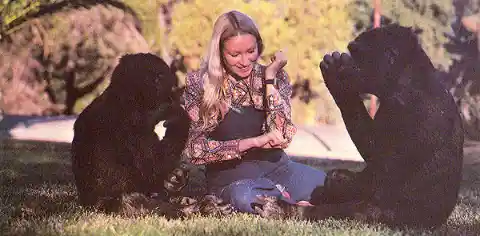
What’s more, the apes’ aptitude for sign language proved to be impressive.
Today, Koko knows more than 1,000 signs and can understand over 2,000 English words.
She “understood some English from the very beginning”
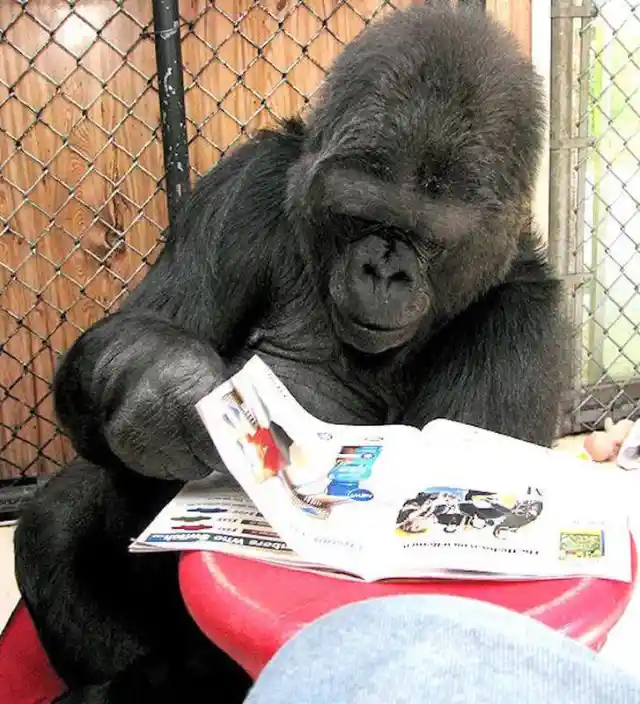
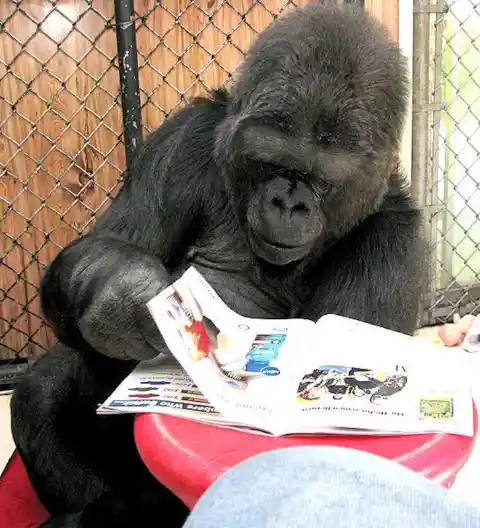
Michael, who passed away in 2000, was just as fluent, while Ndume also picked up signs from Koko and the human caregivers.
Patterson told The Atlantic in August 2015 that, because Koko had long been surrounded by language speakers, she “understood some English from the very beginning.” She explained, “She also had some signs when I arrived that she used without anybody prompting her.
She generalized the signs
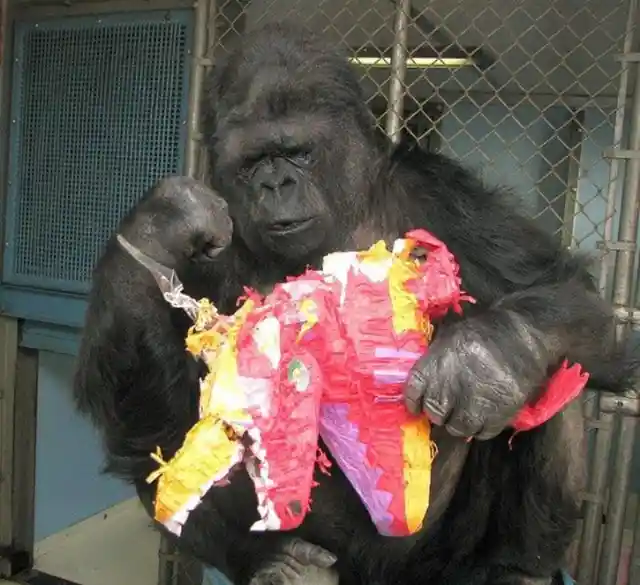
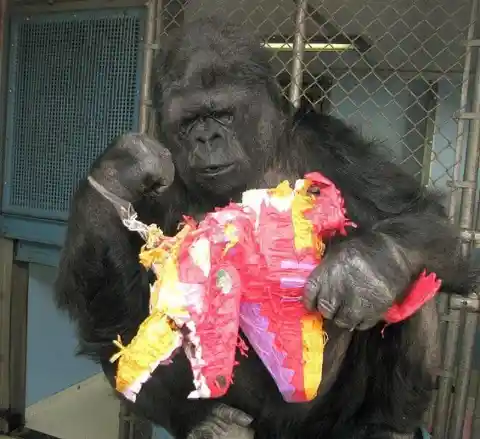
So, I created new signs and asked questions.”
“When she got our signs added to hers, she generalized them,” Patterson added. Gorillas, it was discovered, make their own signs naturally.
Koko uses language
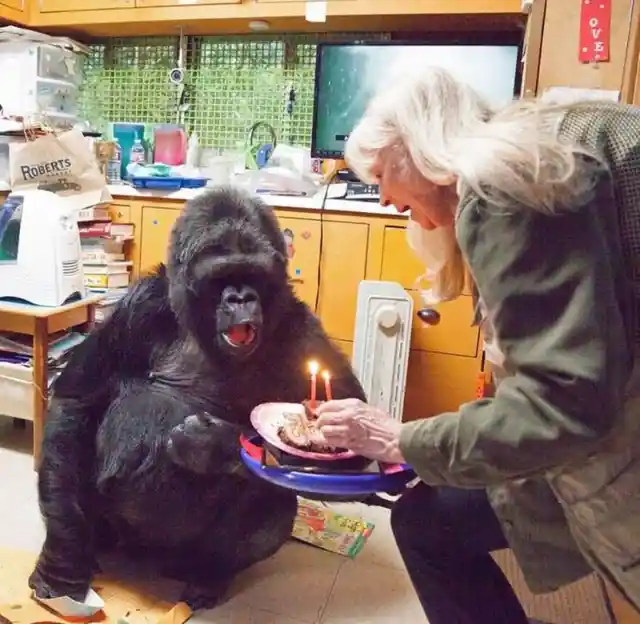
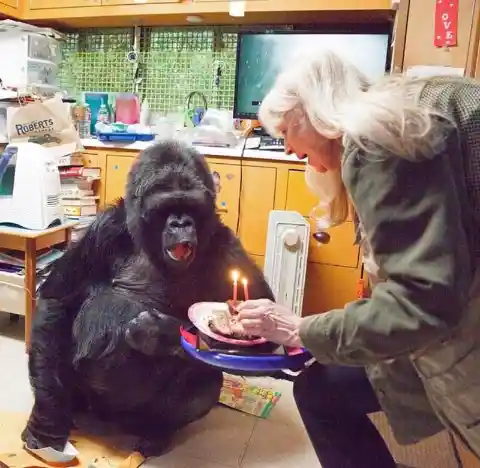
In fact, around 100 have so far been identified by researchers.
Koko uses language at a similar level to that of a young child. Unlike small kids, however, she can grasp concepts like special events.
Koko’s intelligence
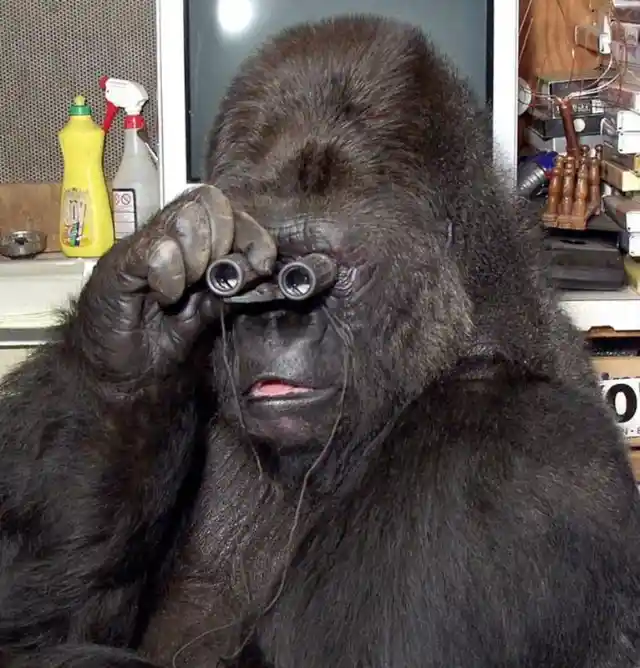
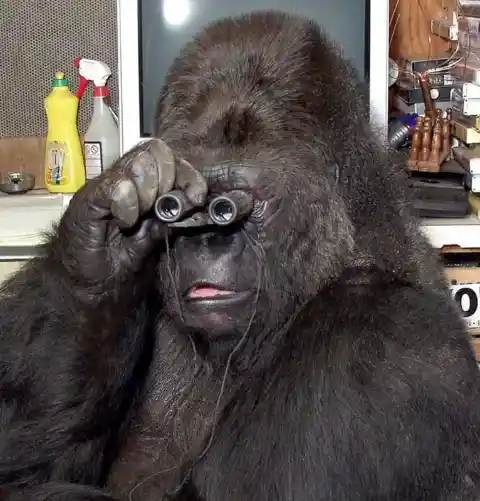
“Even a month before her birthday, she starts putting out some of these cards with birthday designs on them,” Patterson said.
Perhaps unsurprisingly, the extent of Koko’s intelligence has been challenged, but the gorilla’s extraordinary ability to communicate has brought her international fame.
Koko understands that she’s special
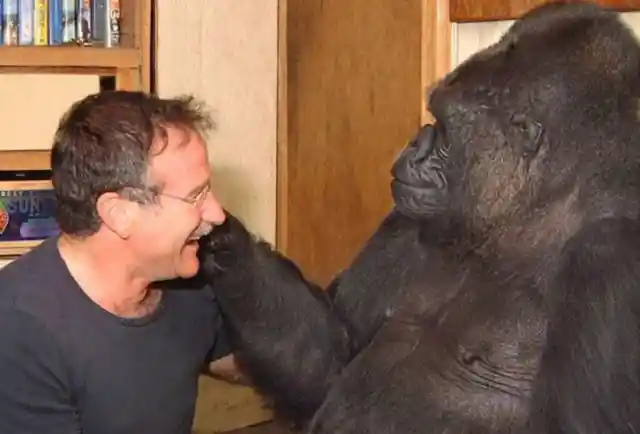
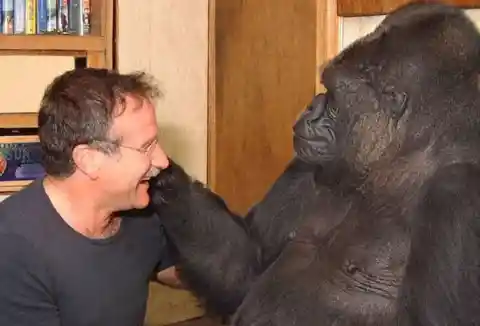
She even has a number of celebrity friends, including Leonardo DiCaprio, Sting and the late Robin Williams, whose passing caused Koko some sadness.
It also seems that Koko is somewhat aware of her status, having used the sign for “queen” to describe herself. “It was a sign we almost never used,” Patterson told The Atlantic.
The sign for “baby”
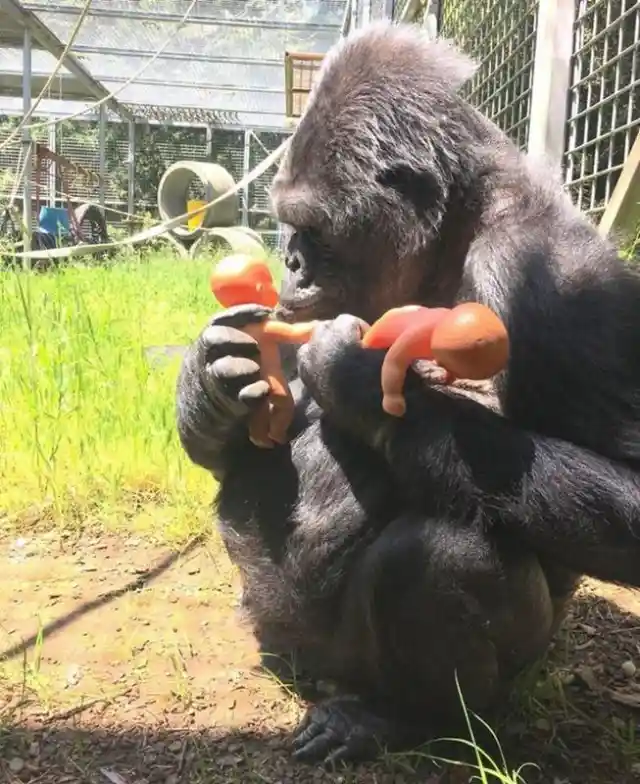
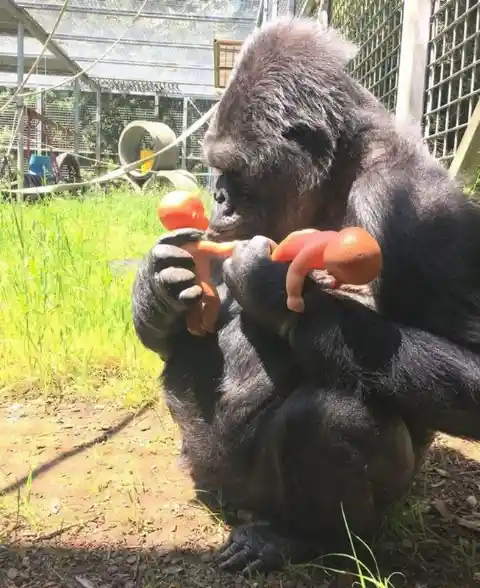
“Koko understands that she’s special because of all the attention she’s had from professors, and caregivers, and the media.”
There’s one thing, however, that no amount of fame can give Koko.
Koko’s caregivers
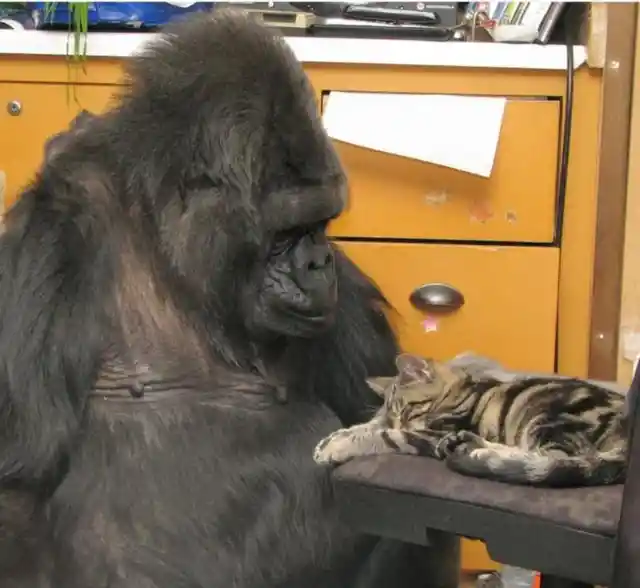
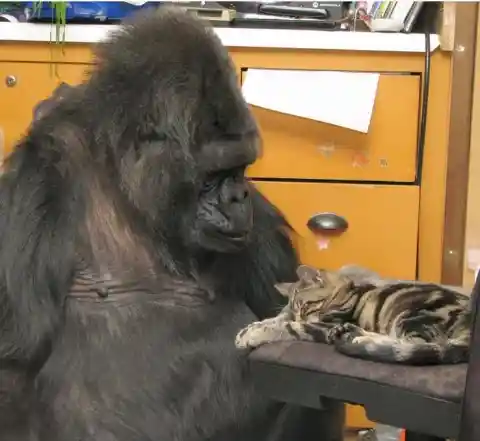
Patterson explained that, whenever she asked the gorilla what she wanted for her birthday, she always replied with the sign for “baby.”
Koko’s caregivers knew that she occupies both the animal and human worlds, so as a youngster she’d often been given toy animals and dolls to play with.
Koko’s friends


When she was 12, however, the gorilla was given a real kitten, named All Ball, to look after.
All Ball, sadly, was run over six months later.
Something super special
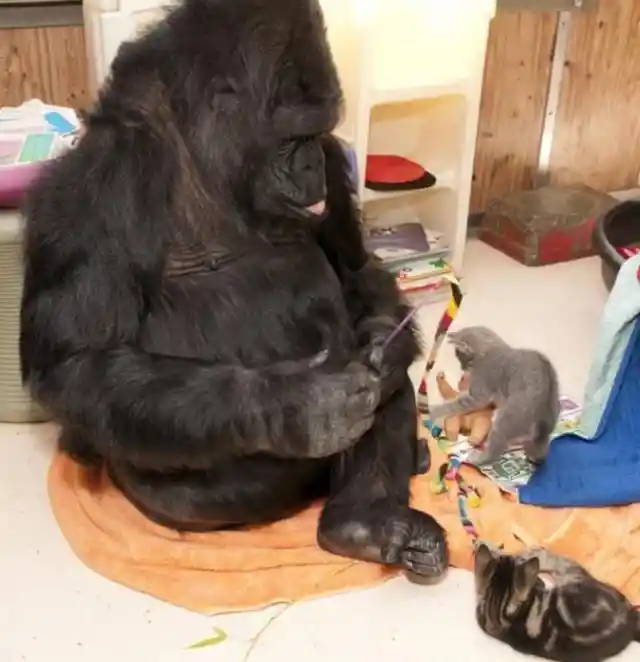
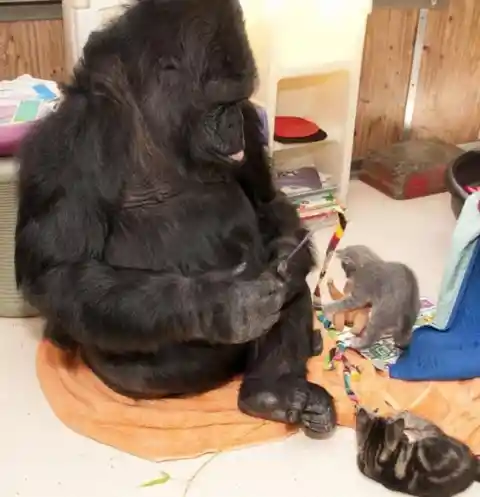
And Koko marked her pet’s passing with the signs for “sad,” “cry,” “trouble” and “frown.” The gorilla has had several kittens since, though, including a red tabby called Lips Lipstick and Smoky, a gray kitty who lived for nearly two decades.
Patterson’s initial four-year pledge to Koko has, then, turned into a 44-year relationship. So, on July 4, 2015, the great ape’s 44th birthday, mommy wanted to really mark the occasion.
The ultimate gift
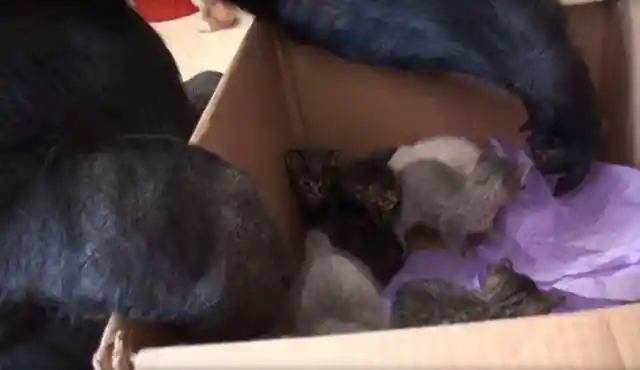
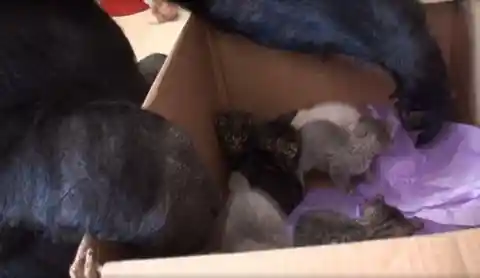
In fact, she gave Koko a box with something super special – and super snuggly – inside.
This was the ultimate gift: a litter of kittens. And despite her huge size and strength, Koko proved to be a gentle giant.
New little kitties
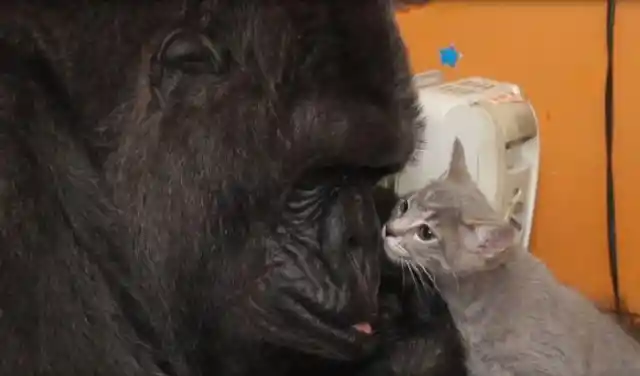
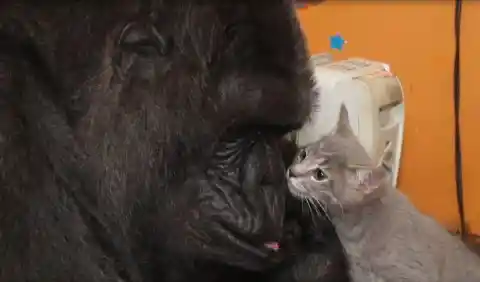
She was certainly eager to pick her new babies up, but she made sure that the kitties got used to her scent first before tickling their bellies with a single finger.
Koko clearly loved her new little kitties. She even used the signs for “cat” and “baby,” which signaled to Patterson that she was more than happy to adopt them.
Koko’s use of sign language
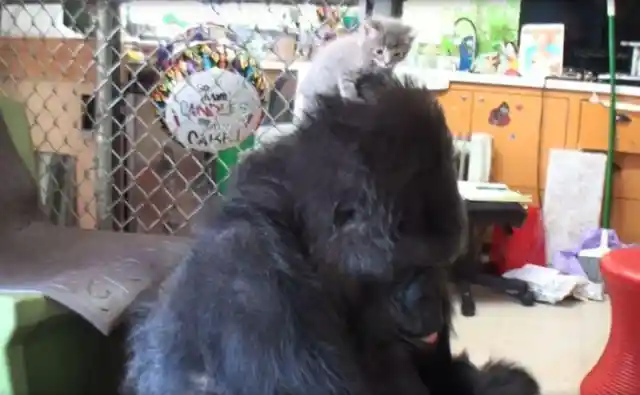
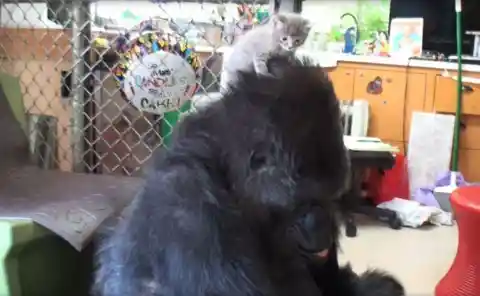
She also signed to ask for one of her favorites – a kitty named Ms. Gray – to be put on top of her head.
A second kitten, Ms. Black, couldn’t wait to climb out and see her new adopted mommy.
Fully fledged cats
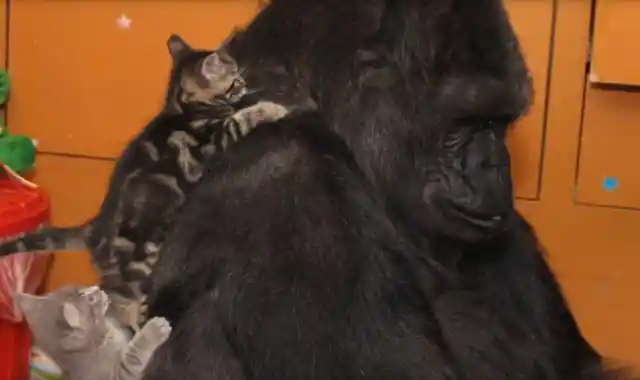
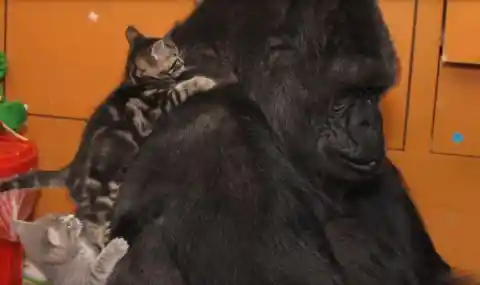
And, throughout it all, Koko was a delight; she sat so still while they climbed all over her. This was clearly one very happy family.
Patterson has largely achieved her goals in terms of Koko’s use of sign language. Now, then, her focus has shifted to great ape welfare in general.
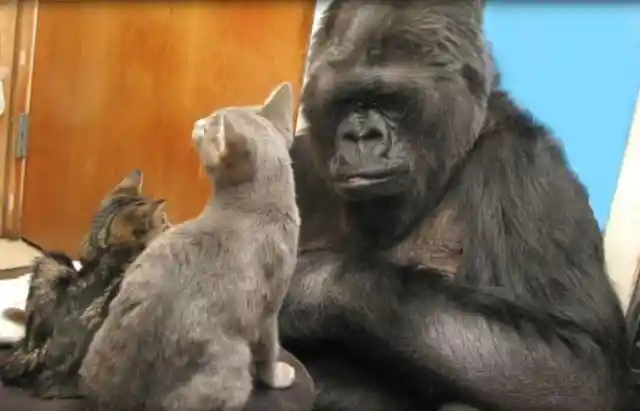
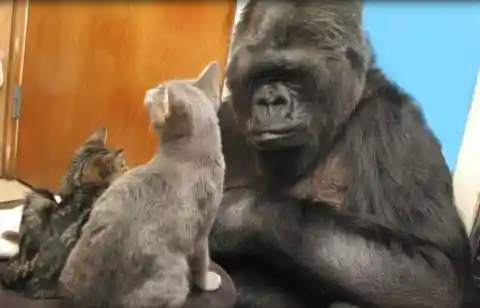
As for the kittens? Well, in February 2016 Koko’s website released a video showing that the kitties had all grown up.